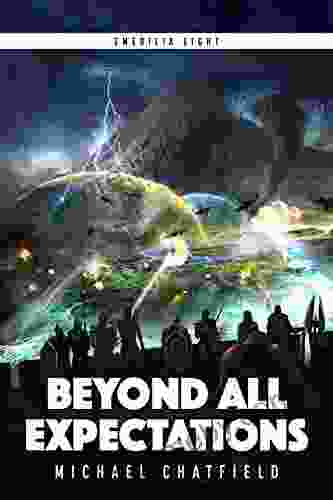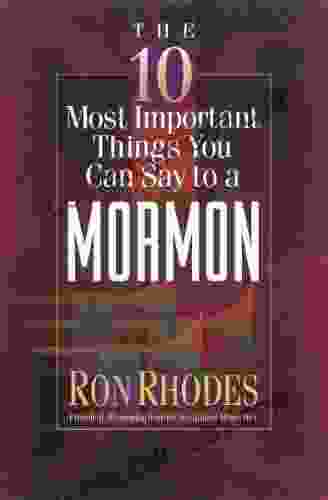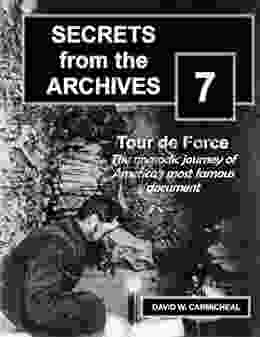Unveiling the Tapestry of Ancestry: Multicultural Origins and Descendants of the Fort Ancient Culture

5 out of 5
| Language | : | English |
| File size | : | 18402 KB |
| Text-to-Speech | : | Enabled |
| Screen Reader | : | Supported |
| Enhanced typesetting | : | Enabled |
| Word Wise | : | Enabled |
| Print length | : | 298 pages |
A Journey through Time and Ancestry
Nestled within the lush valleys and rolling hills of the Ohio River Valley, the Fort Ancient culture flourished from approximately 1000 to 1650 CE. This remarkable civilization, named after the prominent hilltop enclosure in Ohio, emerged as a vibrant tapestry woven from the threads of various cultural influences and ancestries.
Archaeological excavations and meticulous research have unearthed a wealth of artifacts, pottery, and structures that provide glimpses into the daily lives, beliefs, and artistic expressions of the Fort Ancient people. Their legacy continues to captivate historians, archaeologists, and descendants alike, inspiring ongoing explorations into their origins, cultural practices, and enduring impact.
Diverse Roots and Influences
The Fort Ancient culture emerged as a synthesis of diverse cultural influences, reflecting the complex migrations and interactions that characterized the Woodland period in North America. Hopewell and Mississippian influences are particularly evident in Fort Ancient pottery, artifacts, and mound-building practices.
The Hopewell culture, renowned for its intricate earthworks and elaborate burial practices, left an indelible mark on Fort Ancient artistic traditions. Mississippian influences, characterized by complex social organization and centralized authority, are also discernible in Fort Ancient settlements and political structures.
Fort Ancient Pottery: A Canvas of Cultural Expression
Pottery played a central role in Fort Ancient culture, serving both practical and ceremonial purposes. Fort Ancient potters exhibited remarkable skill and creativity, producing a wide array of vessels adorned with intricate designs and motifs. These designs often depicted animals, humans, and supernatural beings, providing insights into the Fort Ancient people's beliefs and artistic sensibilities.
The distinctive Fort Ancient pottery style, characterized by cord-marked exteriors and elaborately stamped interiors, reflects both Hopewell and Mississippian influences. As skilled potters, Fort Ancient artisans crafted vessels for everyday use, such as cooking and storage, as well as for ritual ceremonies and burials.
Mound Building: Monumental Earthworks and Sacred Spaces
Mound building was a significant aspect of Fort Ancient culture, serving both practical and ceremonial purposes. These earthen structures, often arranged in geometric patterns, were used as platforms for houses and temples, as well as for burials and ritual observances.
Fort Ancient mounds, particularly the impressive hilltop enclosure at the site that gave the culture its name, showcase the engineering prowess and cultural significance of this ancient civilization. These monumental earthworks provide tangible evidence of the Fort Ancient people's social organization, their connection to the land, and their beliefs in the afterlife.
Cultural Practices and Daily Life
Beyond their artistic expressions and monumental earthworks, the Fort Ancient people developed a complex set of cultural practices and traditions that governed their daily lives. Subsistence strategies included hunting, fishing, and agriculture, with corn, beans, and squash forming the foundation of their diet.
Fort Ancient settlements were typically situated near waterways, providing access to transportation, sustenance, and trade. Houses were constructed from wood and thatch, and often arranged in circular patterns around central plazas or public spaces. Social organization was likely based on kinship and communal cooperation.
DNA and Archaeological Evidence: Unraveling Ancestry
In recent years, DNA analysis has provided valuable insights into the genetic diversity and ancestry of the Fort Ancient people. Studies have revealed a complex mix of Native American lineages, with influences from both Eastern and Western populations.
Archaeological evidence further supports the multicultural origins of the Fort Ancient culture. Artifact assemblages, burial practices, and settlement patterns all suggest that the Fort Ancient people were not a homogeneous group, but rather a diverse collection of individuals and communities with distinct cultural backgrounds and ancestries.
Descendants and Legacy: Preserving Cultural Identity
The legacy of the Fort Ancient culture continues to resonate today, particularly among Native American communities with ancestral ties to the region. Many modern-day Native American tribes, including the Shawnee, Delaware, and Miami, trace their lineage to the Fort Ancient people.
Through oral traditions, cultural practices, and ongoing research, descendants of the Fort Ancient culture strive to preserve and honor their ancestral heritage. Museums, cultural centers, and historical sites dedicated to Fort Ancient history play a vital role in fostering awareness and appreciation of this rich and diverse Native American legacy.
: A Tapestry of Time and Ancestors
The Fort Ancient culture stands as a testament to the rich tapestry of cultural diversity that has shaped the history of North America. Through their unique blend of artistic traditions, mound-building practices, and social organization, the Fort Ancient people left an enduring mark on the Ohio River Valley and beyond.
Ongoing archaeological research and DNA analysis are continuously expanding our understanding of Fort Ancient origins and descendants, revealing the complex and interconnected nature of human history. As we continue to explore and appreciate the legacy of this ancient civilization, we celebrate the resilience, creativity, and enduring spirit of all those who have walked this land before us.
5 out of 5
| Language | : | English |
| File size | : | 18402 KB |
| Text-to-Speech | : | Enabled |
| Screen Reader | : | Supported |
| Enhanced typesetting | : | Enabled |
| Word Wise | : | Enabled |
| Print length | : | 298 pages |
Do you want to contribute by writing guest posts on this blog?
Please contact us and send us a resume of previous articles that you have written.
 Book
Book Novel
Novel Page
Page Chapter
Chapter Text
Text Story
Story Genre
Genre Reader
Reader Library
Library Paperback
Paperback E-book
E-book Magazine
Magazine Newspaper
Newspaper Paragraph
Paragraph Sentence
Sentence Bookmark
Bookmark Shelf
Shelf Glossary
Glossary Bibliography
Bibliography Foreword
Foreword Preface
Preface Synopsis
Synopsis Annotation
Annotation Footnote
Footnote Manuscript
Manuscript Scroll
Scroll Codex
Codex Tome
Tome Bestseller
Bestseller Classics
Classics Library card
Library card Narrative
Narrative Biography
Biography Autobiography
Autobiography Memoir
Memoir Reference
Reference Encyclopedia
Encyclopedia Richard Huber
Richard Huber Nicolas Rodak
Nicolas Rodak Laurentiu Damir
Laurentiu Damir Kj Hooten
Kj Hooten Ramon Henson
Ramon Henson Stewart D Friedman
Stewart D Friedman Lila Quintero Weaver
Lila Quintero Weaver Laurie Dennett
Laurie Dennett Stephen Davis
Stephen Davis Jubilee Brown
Jubilee Brown Miep Gies
Miep Gies Mike Mills
Mike Mills Tim Lahaye
Tim Lahaye Tim Hornbaker
Tim Hornbaker Scotty Rushing
Scotty Rushing Lavon Stennis Williams
Lavon Stennis Williams Susan Schaefer Bernardo
Susan Schaefer Bernardo Lynn O Shaughnessy
Lynn O Shaughnessy Lisa Regan
Lisa Regan Van Ton Quinlivan
Van Ton Quinlivan
Light bulbAdvertise smarter! Our strategic ad space ensures maximum exposure. Reserve your spot today!

 Oliver FosterUnlock the Secrets of Mediterranean Cuisine: A Comprehensive Guide to Healthy...
Oliver FosterUnlock the Secrets of Mediterranean Cuisine: A Comprehensive Guide to Healthy... Henry JamesFollow ·9.9k
Henry JamesFollow ·9.9k Clayton HayesFollow ·18.7k
Clayton HayesFollow ·18.7k Jeremy CookFollow ·14.4k
Jeremy CookFollow ·14.4k Arthur C. ClarkeFollow ·19.5k
Arthur C. ClarkeFollow ·19.5k Howard PowellFollow ·8.1k
Howard PowellFollow ·8.1k Junichiro TanizakiFollow ·9.1k
Junichiro TanizakiFollow ·9.1k Jason HayesFollow ·4.2k
Jason HayesFollow ·4.2k F. Scott FitzgeraldFollow ·4.1k
F. Scott FitzgeraldFollow ·4.1k

 Lee Simmons
Lee SimmonsUnveiling the Enchanting Emerald Isle: A Literary Journey...
A Tapestry of Breathtaking...
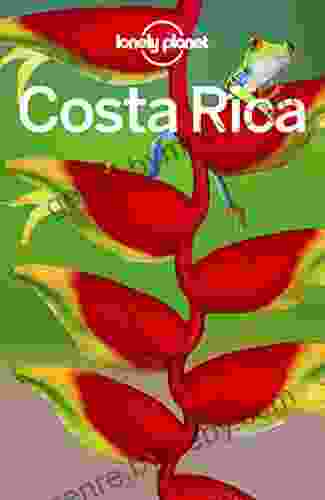
 Thomas Hardy
Thomas HardyUnveiling Costa Rica's Enchanting Essence with Lonely...
Embark on an Unforgettable Costa Rican...
 Bryan Gray
Bryan GrayLifting the Veil of Sorrow: A Beacon of Hope for Widowers
Embrace Healing and Find Solace in the...
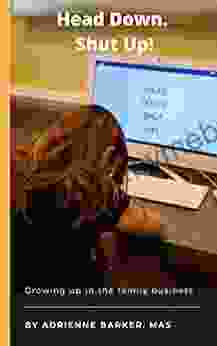
 John Updike
John UpdikeGrow Your Business and Legacy: An Inspiring Guide for...
Growing Up In The Family Business is an...
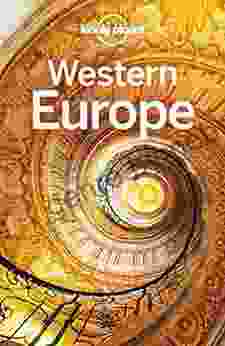
 Harrison Blair
Harrison BlairLonely Planet's Western Europe Travel Guide: Your...
Are you planning an unforgettable...
5 out of 5
| Language | : | English |
| File size | : | 18402 KB |
| Text-to-Speech | : | Enabled |
| Screen Reader | : | Supported |
| Enhanced typesetting | : | Enabled |
| Word Wise | : | Enabled |
| Print length | : | 298 pages |



